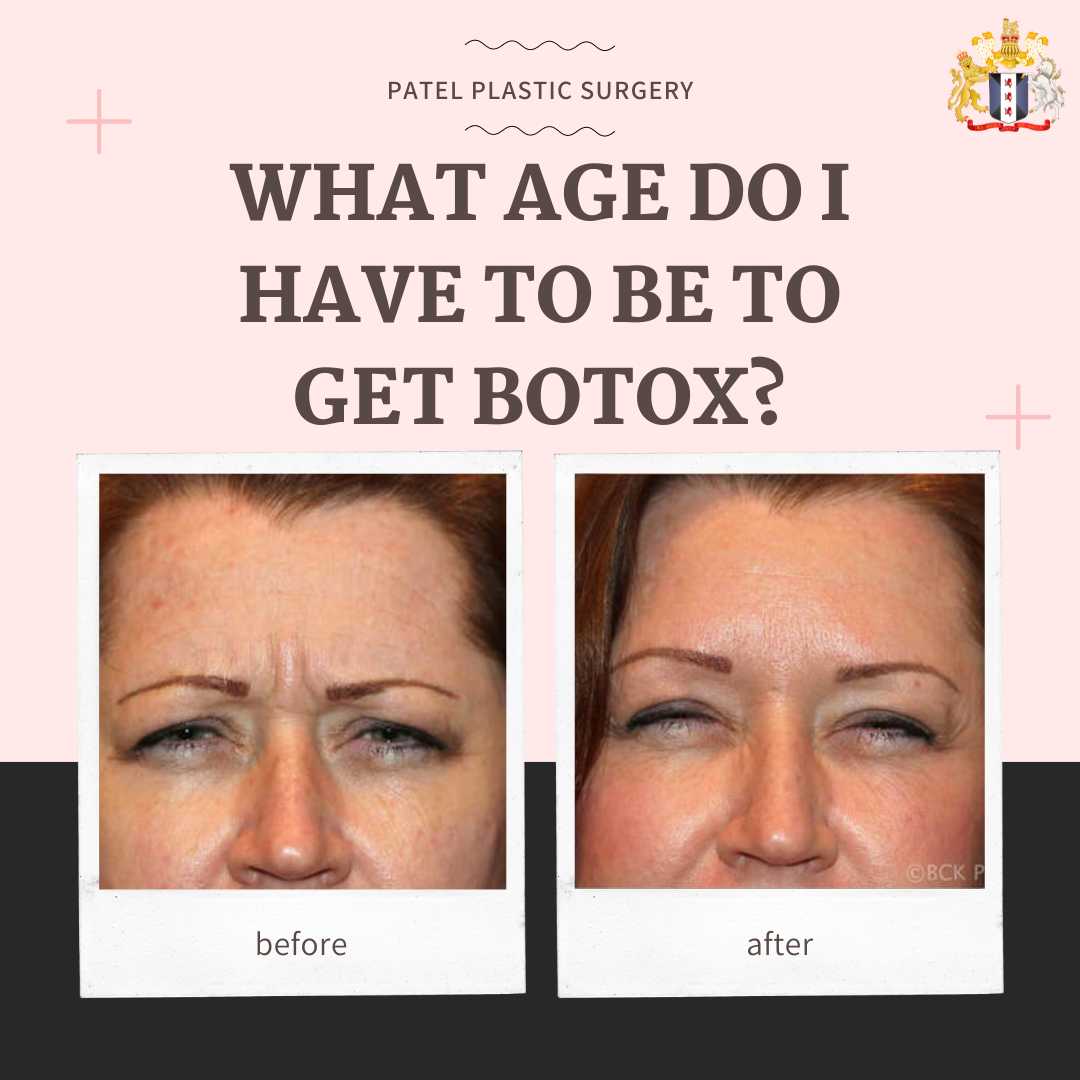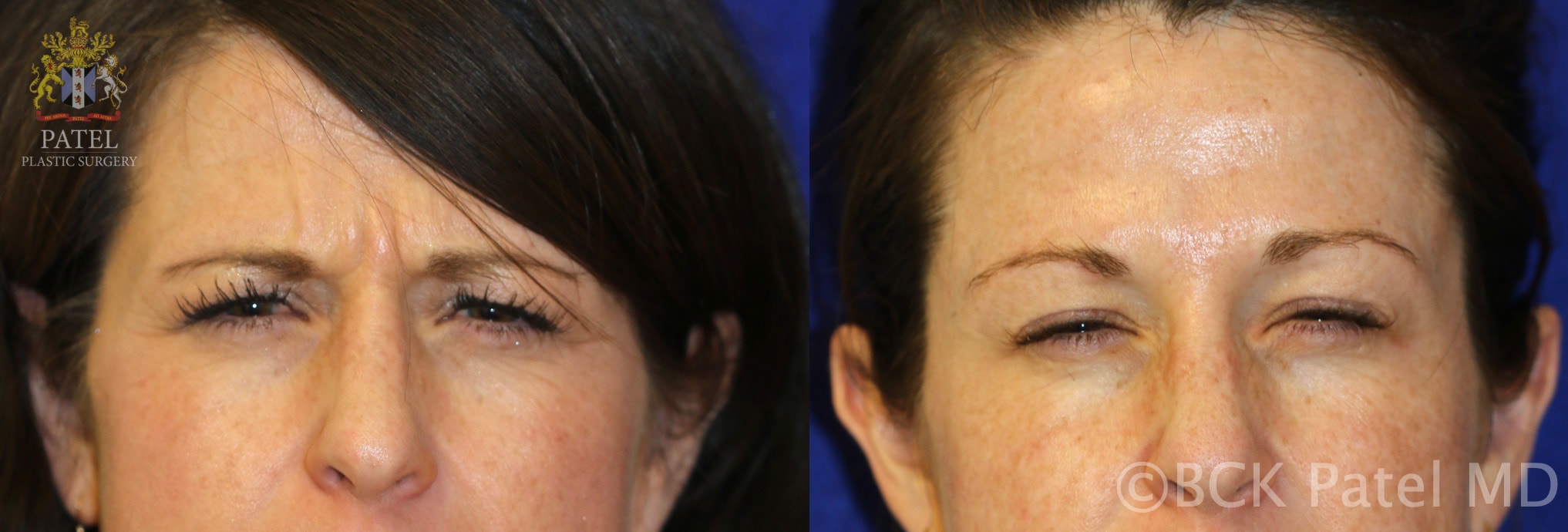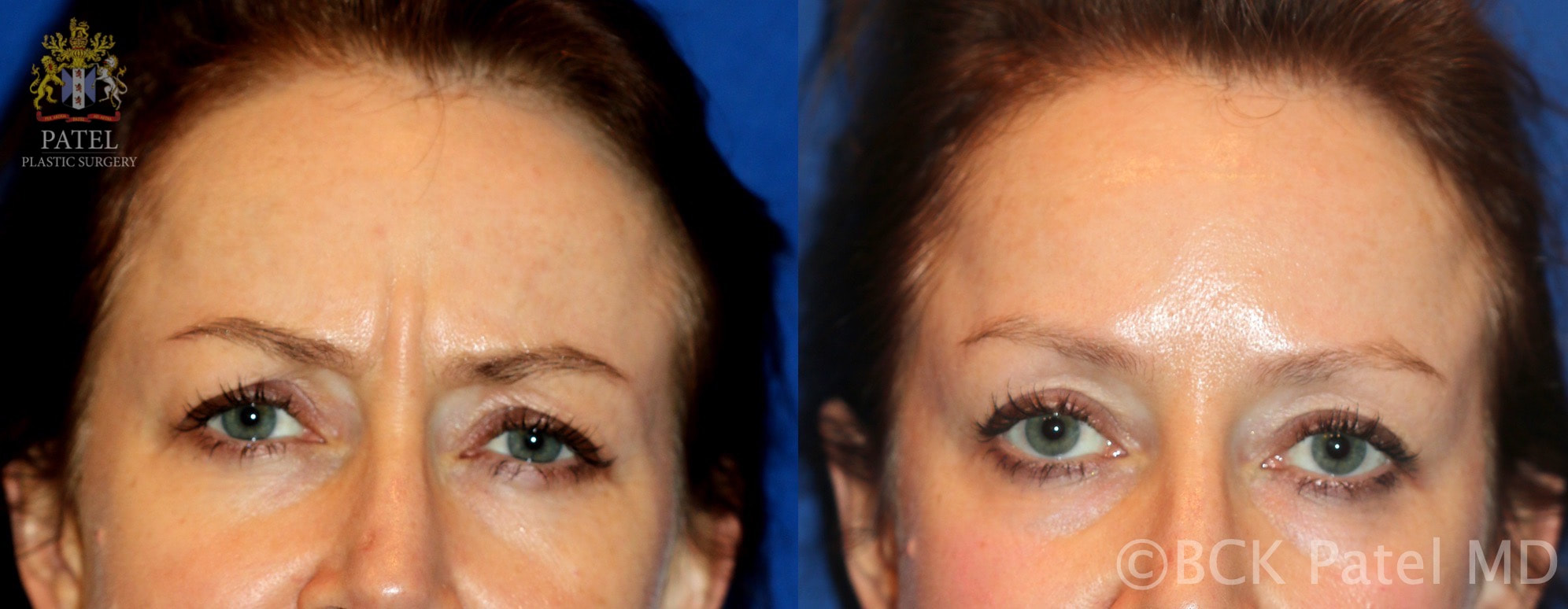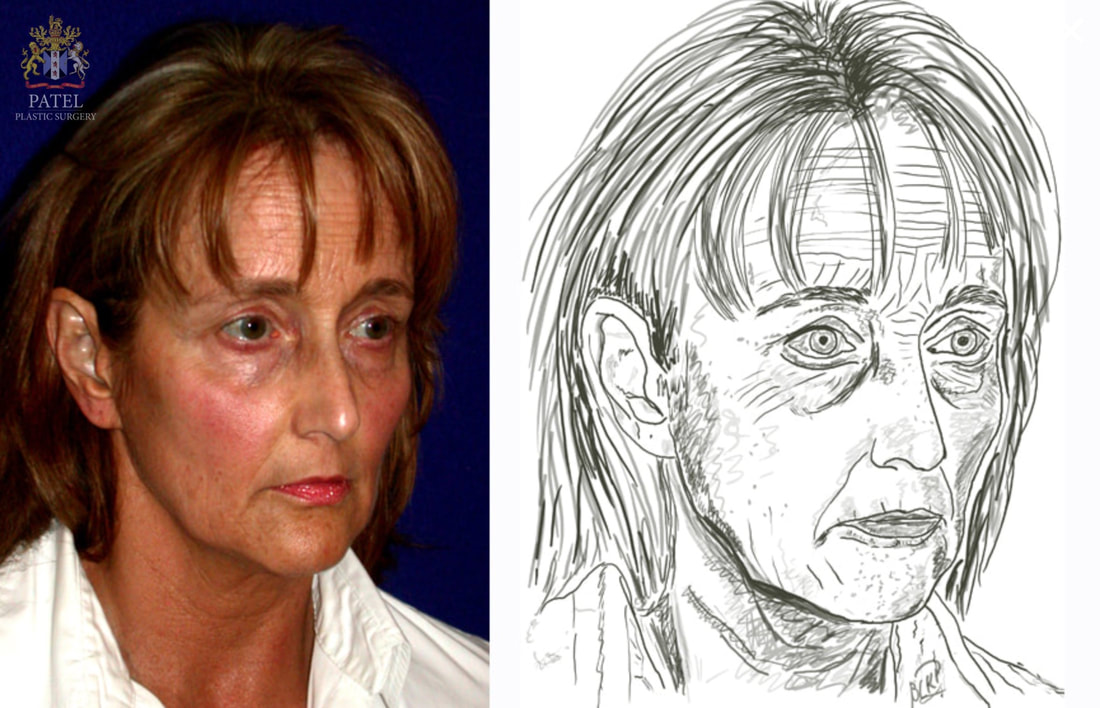Which parts of the face does botox work best on?Botox has become one of the most popular cosmetics treatments sought in the USA. Although the term "Botox" is widely used, the products used are varied and include Botox, Dysport, Myobloc, Xeomin, Jeuveua and others. Cosmetically, any of these products are used for one or more of the following reasons:
Besides cosmetic applications, how else is botox useful?Botox is also used for other medical conditions:
Commonly asked questions about when to start botox and when is it too early or too late?Common questions we are asked are:
What age do I have to be to get botox?The use of botox for wrinkles is approved by the FDA for people over the age of 18 years. Just because it is legal after the age of 18 years does not mean you should get botox!! Wrinkles begin to appear in the late 20s and early 30s. They depend upon a lot of factors including genetics, sun exposure, use or otherwise of sunglasses, occupation, climate, etc. To best understand when botox works and can be considered, it is useful to understand the appearance of facial wrinkles and lines related to the movement of muscles such as the orbicularis (smile lines), corrugator muscle (elevenses or vertical frown lines), frontalis muscle (forehead lines), depressor angularis oris (down-turning mouth), orbicularis oris (vertical lip lines) and the ages where one sees them. Wrinkles and lines that appear at different ages and how botox can helpBotox reduces the dynamic movement of the muscle it is injected in, thereby reducing the wrinkles that form. As dynamic muscles continue to move, over time they form lines that are initially only there when you move the muscles but eventually the lines etch themselves into the skin. The production of collagen and elastin starts to slow down in our early 30s with factors such as smoking, sun exposure, diet, stress, sleep, etc all having an effect on the static lines that eventually develop. Botox in the 20s and 30s: is it too early to start botox?Age in the 20s In the 20s, botox is often promoted for "preventative purposes" or, to use an awful phrase, "prejuvenation". In this decade, lines only form when you use your muscles and are called "Stage 1" wrinkles. Botox should only be used if the lines remain after you relax the muscles. These are the lines that will deepen over time and it is reasonable to consider getting botox. Unlike what many suggest, I do not believe that getting botox in the early 20s prevents any lines developing. There is too much promotion of "preventative botox in the very young. If you don't have lines that remain after relaxing a frown or smile, do NOT get botox. Age in the 30s The late 20s and early 30s are common ages when patients will seek botox injections. In the high-stress world we live in, together with the very outdoors lifestyle, it is not surprising that the wrinkles and lines begin to appear in this age group. As the collagen production and elastin formation begin to slow down, static wrinkles begin to appear (meaning there are wrinkles even when your muscles are not moving): these are "Stage 2" wrinkles. At this stage, 25 to 35 units of botox will address the issues nicely. However, some people have stronger muscles (depending upon genes, racial background, occupation, etc) and may need a higher dose of the injection. In this age group, the effects of the botox will last up to four months. Botox in the 40s and 50s: is it too late?Age in the 40s: is 40 too late for Botox? "Stage 3" wrinkles may be seen in this age group where the wrinkles are there in a "relaxed face". If makeup stays in a groove or one can see the shadows formed by the grooves with the face relaxed, these are "Stage 3" wrinkles. In such patients, the botox, when judiciously delivered, will relax the muscles and soften the lines but will not eliminate the "grooves" formed by the muscle movement. Patients will often feel like their botox does not last as long but this is because the lines begin to appear deeper sooner. Most patients with stage 3 wrinkles will need 35 to 45 units of botox every three to four months. There is no real upper limit for starting or receiving botox injections. The injections still successfully reduce the movement of muscles that cause dynamic lines like forehead lines, crow's feet, bunny lines, lip lines, "elevenses", nasal horizontal procerus lines, etc. However, some of the lines by the late 30s and early 40s become more "permanent", in that they are there even when the muscles are not moving. In this case, treatment of the epidermal and dermal changes can be improved with the use of chemical peels and one of a number of different lasers, including the CO2 laser. Age in the 50s and above: is 50 too late for Botox? "Stage 4" wrinkles are the deeply formed lines where even after botox, the groove is visible. These wrinkles do respond to botox but the patient will also need some fillers to fill out the grooves. We often do this in the frown muscles, where the effect of the botox will then last much longer. Furthermore, the filler in the forehead lines may last as long as two years or more! Lasers are also used to improve the texture of the skin over the wrinkles and other modalities like chemical peels, microneedling and radiofrequency treatments may also be indicated. If your lines are deep and associated with structural changes like brow ptosis, deep forehead lines, cheek ptosis and deep smile lines, surgical intervention together with the use of fat grafts and lasers may be the best option. This is where you need to be injected by a surgeon who is used to doing facelifts, endoscopic browlifts, blepharoplasties, necklifts, etc and who can guide you appropriately. Disadvantages of having botox too earlyThere is a tendency for the cosmetic industry to "sell, sell, sell" and promote botox too early. You should ensure that you get the improvement that can be seen photographically as well as dynamically and only you can be the best judge of that. There is some concern that patient's muscles may get "used" to the injections. However, there is little evidence of this as the body sprouts new nerve endings over time and the movement of the muscle returns. On the other hand, we have certainly seen the deeper wrinkles get less deep over time as botox injections are repeated. Sometimes it may be necessary to switch from botox to dysport or one of the other types of botulinum toxin to continue to get the best results. Finally, cost should always be considered: you can still get a nice result and long-term benefit if you have the injections every four to five months instead of every three months. Related
0 Comments
Leave a Reply. |
AuthorDr. BCK Patel MD, FRCS |
- Home
- Locations
-
Conditions
- Aging Of The Face
- Aging of Lower Eyelids
- Aging of the Forehead and Brows
- Aging of Upper Eyelids
- Aging of the Cheeks
- Aging of the Neck
- Aging of the Lips
- Aging of the Mouth
- Aging of the Chin
- Aging of Eyelashes
- Aging of the Hands
- Aging Of Skin Colour
- Aging Of Hair
- Aging of the Jowls
- Aging of Men
- Aging of the Skin
- Aging of Veins and Vessels
- Scars
-
Cosmetic
- Facelift
- Browlifts
- Lower Blepharoplasty
- Upper Blepharoplasty
- Midface Lift/Hammock Lift
- Necklift
- Cosmetic Surgery for Men
- Lip Lines
- Lips
- Mouth
- Neck Liposuction
- Fat Transfer
- Skin Resurfacing
- Cheeks
- Removal of Moles, Lesions, Tags, Cysts and Blemishes
- Facial Implants
- Otoplasty, Ear Pinning, or Bat-Ear Repair
- Complications?
-
Reconstruction
- Acquired Ptosis and Dermatochalasis
- Congenital Ptosis
- Ptosis in Myasthenia Gravis
- Blepharophimosis Syndrome
- Entropion
- Ectropion
- Thyroid Eye Disease
- Nasolacrimal Duct Obstruction
- Skin Tumors
- Orbital Tumors
- Blepharospasm
- Pterygium
- Anophthalmos and Microphthalmos
- Enucleation and Evisceration
- Exenteration
- Symblepharon
- Congenital Anomalies - Lid Disorders
- Acne Rosacea
- Trauma
- Infections
-
Non Invasive
- Photorejuvenation
- Aerolase Laser
- Botox
- Radiesse
- Restylane
- Juvederm
- Fractional Carbon Dioxide CO2 Laser
- Fractional Resurfacing Lasers: Erbium lasers
- Laser Hair Removal
- Kybella
- Chemical Peels
- XEOMIN ®
- Voluma
- LATISSE EYELASH TREATMENT
- Leg Veins and Spider Vein Treatment
- Sculptra
- Neck and Chest Cosmetic Concerns
- Dysport
- Accent Radiofrequency
- Microdermabrasion and Light Chemical Peels
- Melasma
- Laser Tattoo Removal
- Color and Texture Issues – Brown Spots on Face, Redness
- Scars and Acne
- Permanent Cosmetic Makeup
- Resources
- About
- Blog
- Contact
VIDEOS
links
www.hammocklift.com
WWW.PATELFACELIFT.COM
www.englishsurgeon.com
www.drbhupendrapatel.com
bckpatel.info
WEBOFSCIENCE
researchgate
GOOGLE SCHOLAR
linktr.ee
Patel Plastic Surgery . Copyright 2024 . All Rights Reserved






